Sinhagad Fort: Best for History, Trekking Guide, and Travel Tips
No gallery images uploaded for this place.
- Categories: Forts, Historical Place, Tourist Places
- Tags: Forts near Pune, Maratha heritage sites, MarathaHistory, PuneTreks, Sinhagad Fort, Sinhagad Fort history, Sinhagad Fort trek, SinhagadFort, Tanaji Malusare, Weekend Getaway
- Location Taxonomy: India, Maharashtra, Pune
Perched atop the Sahyadri ranges, just 35 km southwest of Pune, Sinhagad Fort is one of Maharashtra’s most iconic hill forts. With its dramatic cliffs, panoramic views, and deep-rooted Maratha history, Sinhagad is a favorite among trekkers, history enthusiasts, and weekend travelers. Formerly known as Kondhana, the fort was renamed “Sinhagad” (Lion’s Fort) after the legendary Battle of Sinhagad in 1670, where Maratha warrior Tanaji Malusare laid down his life to recapture the fort from the Mughals.
This article explores the complete history, architecture, trekking experience, nearby attractions, and FAQs about Sinhagad Fort, making it a definitive guide for anyone planning a visit.
Historical Significance of Sinhagad Fort
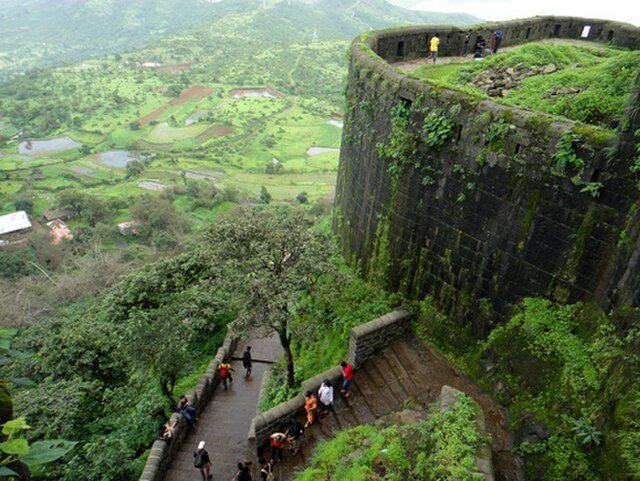
- Original Name: Kondhana Fort
- Built By: Believed to be built around the 11th century by the Koli tribal chieftains
- Strategic Location: Guarded the Pune region and key trade routes
- Dynasties: Controlled by the Bahamani Sultanate, Mughals, and later the Marathas
Key Historical Events:
- 1647: Shivaji Maharaj first captured Kondhana from the Adil Shahi dynasty
- 1662: Fort handed over to the Mughals under the Treaty of Purandar
- 1670: Tanaji Malusare led a daring night assault to recapture the fort; though he died in battle, the fort was won
- Renaming: Shivaji Maharaj renamed it “Sinhagad” in honor of Tanaji’s bravery—“The Lion is dead, but the fort is captured”
Sinhagad Fort became a symbol of Maratha valor and sacrifice, and remains deeply revered in Maharashtra’s cultural memory.
Architectural Features of Sinhagad Fort
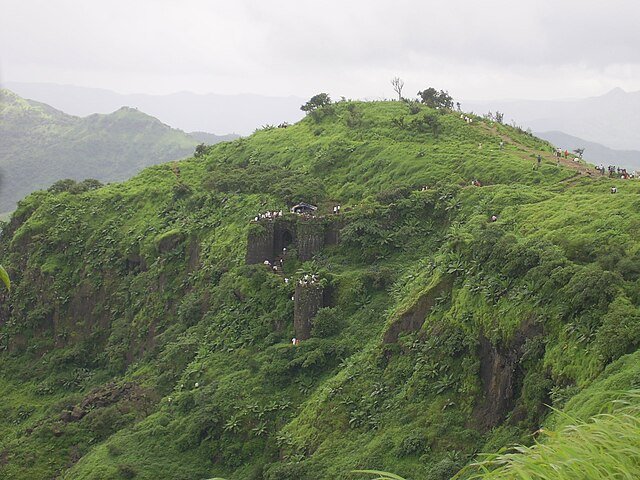
Though much of the fort is in ruins today, its layout and surviving structures reflect its military and strategic brilliance.
Key Highlights:
- Kalyan Darwaza & Pune Darwaza: Two main entrances with defensive architecture
- Tanaji Malusare Memorial: A statue and tomb honoring the Maratha hero
- Rajaram Maharaj Memorial: Commemorates Shivaji’s son who died here
- Amruteshwar Temple: Ancient temple dedicated to Lord Shiva
- Military Barracks & Storage Rooms: Remnants of the fort’s garrison infrastructure
- Water Tanks & Cisterns: Rock-cut reservoirs that supplied water during sieges
The fort’s natural defenses—steep cliffs and narrow approaches—made it nearly impregnable.
Trekking Experience at Sinhagad Fort
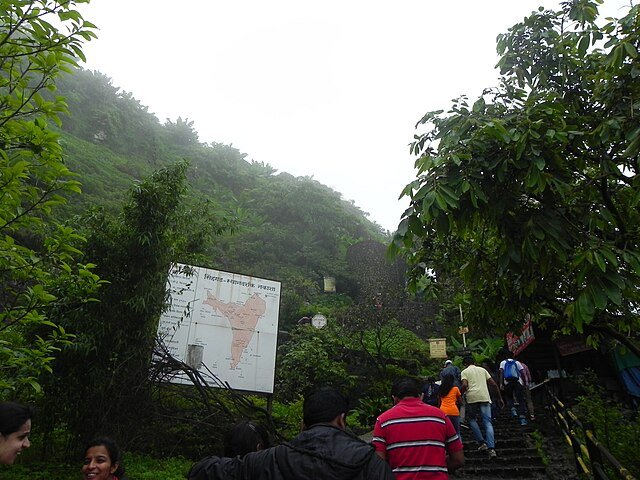
Trekking to Sinhagad Fort is one of the most popular outdoor activities near Pune.
Trekking Route:
- Base Village: Sinhagad Payatha (Donje or Kalyan)
- Altitude: Approx. 4,320 feet (1,320 meters)
- Distance: 2.5–3 km trek
- Duration: 1–2 hours to ascend
- Difficulty Level: Easy to moderate
Highlights of the Trek:
- Forest trails with scenic views
- Sunrise and sunset viewpoints
- Local vendors selling kanda bhaji and curd
- Historical ruins and memorials
- Cool breeze and panoramic views of Khadakwasla Dam and Torna Fort
Natural Beauty and Biodiversity
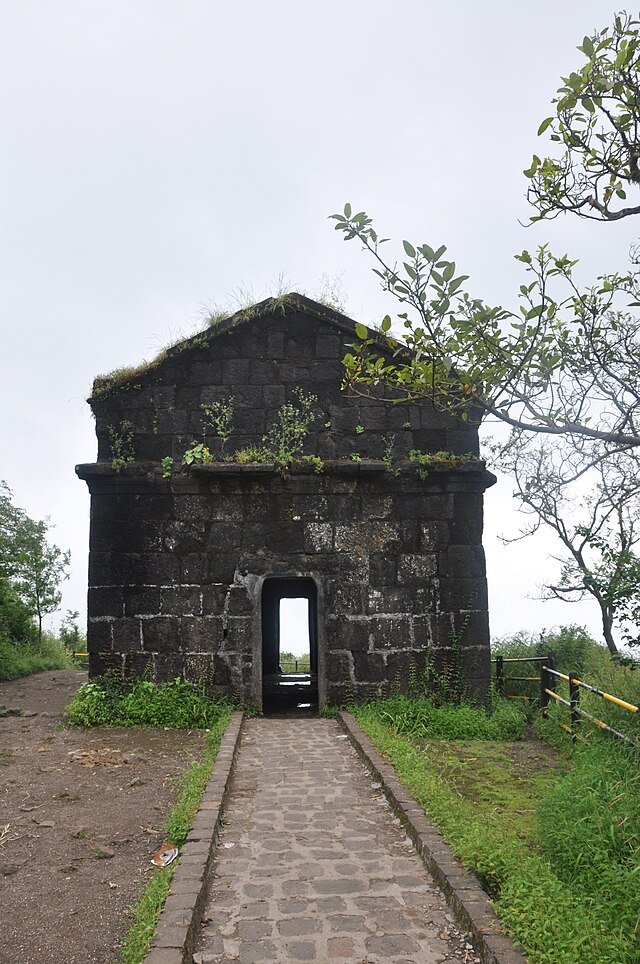
- Flora: Wildflowers, medicinal herbs, and dense forests
- Fauna: Monkeys, peacocks, and native bird species
- Birdwatching: Ideal during early mornings and post-monsoon season
- Photography: Stunning landscapes and historical backdrops
Location and Accessibility
- District: Pune, Maharashtra
- Nearest City: Pune (35 km)
- Nearest Railway Station: Pune Junction
- Nearest Airport: Pune International Airport
How to Reach:
- By Road: Drive or take a bus to Sinhagad Payatha; trek or drive up to the fort
- By Public Transport: PMPML buses available from Swargate to Donje village
- Parking: Available at the base and top (limited during weekends)
Best Time to Visit Sinhagad Fort
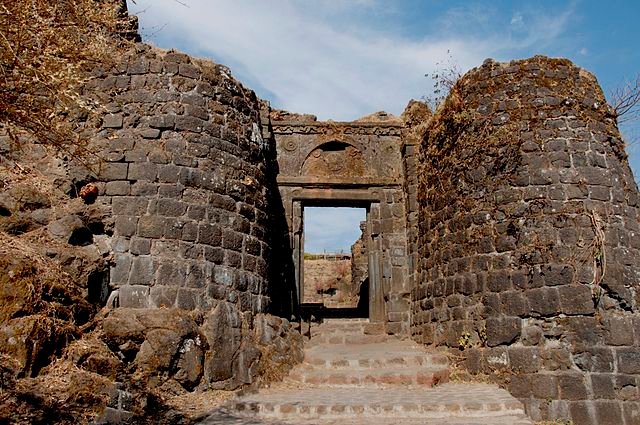
- Monsoon (June–September): Lush greenery and misty views
- Winter (October–February): Pleasant weather, ideal for trekking
- Avoid Summer (March–May): Hot and dry conditions
Entry Fees and Timings
- Entry Fee: ₹50 per vehicle (if driving to the top)
- Timings: 6:00 AM – 6:00 PM daily
- Guides: Local guides available for historical tours
Things to See at Sinhagad Fort (List View)
- Tanaji Malusare Memorial
- Kalyan Darwaza
- Pune Darwaza
- Rajaram Maharaj Memorial
- Amruteshwar Temple
- Military Barracks
- Water Tanks and Cisterns
- Sunrise Viewpoint
- Khadakwasla Dam View
- Local food stalls (kanda bhaji, pithla bhakri)
Nearby Tourist Attractions
- Khadakwasla Dam (15 km): Scenic reservoir with boating and picnics
- Panshet Dam (25 km): Ideal for photography and nature walks
- Torna Fort (30 km): Historic Maratha fort with trekking trails
- Rajgad Fort (40 km): Another key fort in Shivaji’s campaign
- Pune City (35 km): Cultural and historical sites like Shaniwar Wada and Aga Khan Palace
Travel Tips for Visitors
- Wear trekking shoes with good grip
- Carry water, snacks, and a raincoat during monsoon
- Start early to avoid crowds and enjoy sunrise views
- Respect local customs and avoid littering
- Hire a guide for deeper historical insights
❓ FAQs about Sinhagad Fort
Q1: Why is Sinhagad Fort famous?
A: It is known for the Battle of Sinhagad in 1670, where Tanaji Malusare sacrificed his life to recapture the fort for Shivaji Maharaj.
Q2: What is the best time to visit Sinhagad Fort?
A: October to February is ideal for pleasant weather and trekking.
Q3: How far is Sinhagad Fort from Pune?
A: Approximately 35 km, around 1 hour by road.
Q4: Are there temples at Sinhagad Fort?
A: Yes, including the Amruteshwar Temple dedicated to Lord Shiva.
Q5: Is Sinhagad Fort suitable for beginners?
A: Yes, the trek is easy to moderate and suitable for most fitness levels.
Conclusion
Sinhagad Fort is a timeless symbol of Maratha bravery, natural beauty, and historical legacy. From its association with Tanaji Malusare to its panoramic views and trekking trails, the fort offers a rich experience for every visitor. Whether you’re a history enthusiast, a nature lover, or a weekend explorer, a visit to Sinhagad Fort promises inspiration, adventure, and a deeper connection to Maharashtra’s glorious past.
